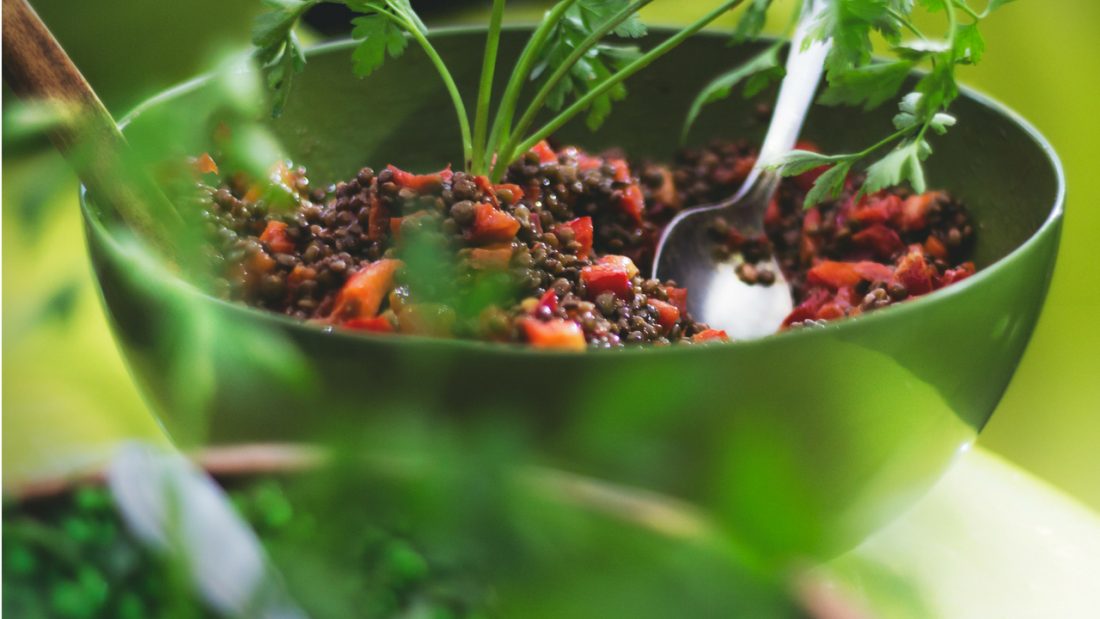Essential amino acids must be obtained from our food. Where as non-essential amino acids are made by the body, so we don’t need them from food. Amino acids are the building blocks of protein. They are also found as free amino acids in food and the body.
So, why are amino acids important, and what do we need to eat, to meet our requirements for essential amino acids?
Photo by James Sutton on Unsplash
Role of amino acids in the body
There are 20 different amino acids required by the human body:
Essential amino acids
- Lysine
- Leucine
- Isoleucine
- Valine
- Threonine
- Phenylalanine
- Tyrosine
- Tryptophan
- Methionine
Non-essential amino acids
- Arginine
- Cysteine
- Glutamine
- Glycine
- Proline
- Tyrosine
- Alanine
- Aspartic acid
- Asparagine
- Glutamic acid
- Serine
Amino acids support many functions in the body. They are used in the synthesis of coenzymes, hormones and other molecules that have regulation, communication and transport roles. They also form proteins that support the function and maintenance of the body in numerous ways.
Protein is found in all living cells. It is required for growth and development. It is also required for repair of body cells and tissues.
Protein is a major part of your skin, hair, nails, muscle, bone and internal organs. It is also found in your body fluids, e.g. haemoglobin (a protein) transports oxygen around the body via your blood stream.
The human body is made up of about 16% protein. So, an 80kg adult would carry about 12.5kg of protein. Half of the protein is contained in skeletal muscles. Other structural body tissues such as blood and skin contain about 15% protein.
Essential amino acids in foods
Animal and plant foods both provide proteins. Animal food sources provide a greater range of amino acids, compared to most plant foods (see complete protein foods below).
After ingestion, proteins are broken down by the acid in the stomach into smaller peptides (chains of amino acids). There a number of enzymes (substances) that help this process. Free amino acids and short peptides are then absorbed into the blood from the small intestine, so they are available for use by the body.
In Australia and New Zealand, the major food sources of protein are:
- 33% – from meat, poultry and fish
- 25% – cereals and cereal based foods
- 16% – dairy foods
- 8% – vegetables
Complete protein foods
These foods contain all nine essential amino acids.
- Meat, poultry and fish
- Eggs
- Dairy foods
- Quinoa
- Soy/ Tofu/ edamame beans
- Buckwheat
- Chia seeds
In-complete protein foods
- Legumes and lentils (except soy, which is a complete protein source), e.g. adzuki, chickpeas, kidney, lima and pinto.
- Grains and pseudo grains (except for buckwheat and quinoa which provide all essential amino acids) e.g. whole grain bread, oats, barley, rye, amaranth, brown rice (and other rice), and pasta.
- Nuts and seeds (except chia which provide complete protein).
- Vegetables
Combining foods to form complete protein meals and snacks
By eating a variety of vegetarian sources of protein during the day, you will ingest all nine essential amino acids. It is not necessary to combine them at each meal, even though many traditional vegetarian meals do this, for example,
- Lentil dhal and brown rice
- Mexican kidney beans and tortillas (or rice)
- Minestrone soup (pasta and beans with vegetables)
- Falafel (chickpeas), with tabouli containing bulgur wheat (wheat is partially boiled and then dried), but you can also make tabouli with other grains such as barley or quinoa
- Stir-fry vegetables and tofu or tempeh with rice or noodles
- Salads combining beans, lentils or chickpeas, with nuts or seeds and green leafy vegetables
- Rice and lentil or bean salads with added baked vegetables, such as pumpkin or sweet potato
- Snacks such as pita and rice crackers with hummus (chickpeas) or breads with nut spreads
As you can see, these traditional combinations of foods include legumes and grains. Beans and nuts (legumes) are low in the amino acid methionine, whilst grains are low in the amino acid lysine. Together they form a complete protein.
By eating a variety of plant foods during the day, you can meet your nutritional requirements for protein and other nutrients.
For guidelines on recommended serves of grains, protein-rich foods, fruits and vegetables, and nuts, seeks and oils, please click on theses links:
Notes for vegetarian style eaters
Regular health checks are recommended for people eating a vegetarian diet to monitor nutritional status. Iron and Vitamin B12 levels can become depleted in some people following vegetarian and vegan style diets.
If you do not eat dairy or eggs and also exclude legumes and/ or grains, then I encourage you to seek assistance from a qualified nutrition specialist, such as an accredited practising dietitian.
Eating for You specialises in vegetarian and plant food eating, for personalised advice, inquire here.
